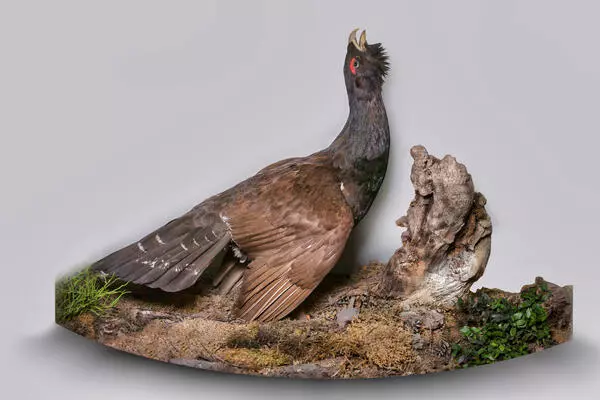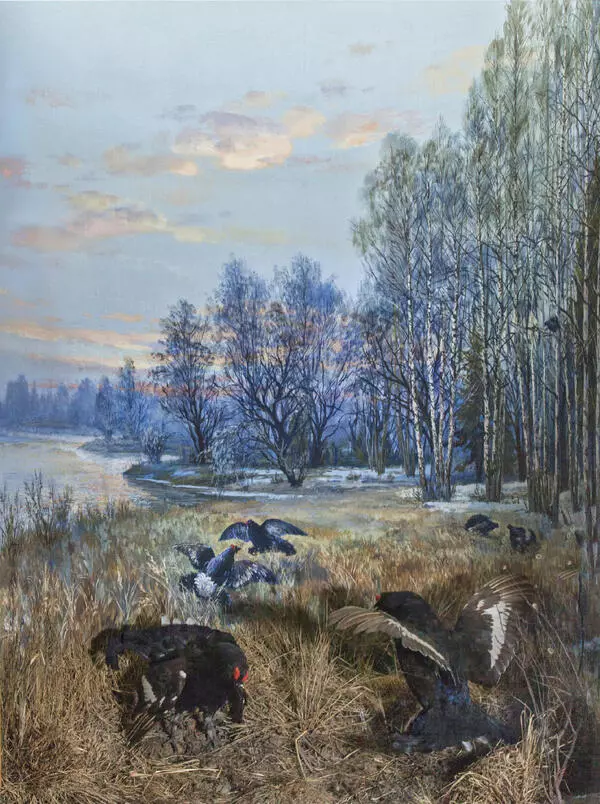The golden eagle is considered the largest of all the eagles living in Russia. Its weight reaches 7 kilograms, and its wingspan is up to 2,5 meters. The golden eagle has sharp binocular vision: it can see objects with both eyes at the same time and distinguish colors. Vision allows the bird to look out for prey from a height of up to two kilometers, and with the help of sharp hooked claws and beak, the golden eagle is able to cope even with a strong victim. In its claws, it can carry prey weighing up to 5 kilograms.
The golden eagle hunts in different ways. In clear weather, it soars high in the sky, and in bad weather, it glides at a low altitude or ambushes its victim, hiding in a tree or on a rock.
In the wild, the golden eagle preys on gophers, marmots, hares, pheasants, partridges. Sometimes it feeds on carrion, from which it can drive away a large black vulture. The golden eagle is able to successfully attack larger prey —woodgrouse, cranes, herons, foxes, young ungulates.
The golden eagle is found almost all over Russia — from the steppes and semi-deserts to the forest tundra. In many areas, one nest can be hundreds of kilometers away from another. The golden eagle builds a dwelling from branches on rocks or on tall trees. One nest can last for many years and reaches an impressive size: up to 2 meters in diameter and about 1.5 meters in height. Sparrows often settle between the branches that make up the nest. There are usually two eggs in a golden eagle’s clutch, but only one chick survives.
The number of golden eagles is gradually decreasing due to deforestation, the destruction of forest islands in the middle of swamps, steppes and other open places. The lack of feed and direct extermination by humans seriously affects their population: until recently, golden eagles were shot for stealing small livestock. Today, golden eagles are listed in the Red Book of Endangered Species of the Russian Federation and the Red List of the International Union for Conservation of Nature. To preserve this species, nesting sites are taken under protection, nesting platforms are built and winter feeding is organized.
In Kazakhstan and Kyrgyzstan, hunting with golden eagles is an ancient tradition. However, the taming and training of this bird is a long and complex process. Nevertheless, berkutchi — a trainer — stays close to the bird almost constantly, plays it dombra (Kazakh mandoline-like instrument), talks affectionately, teaches her to accept food from her hands and only then proceeds to training with the help of stuffed animals. In addition, hunting golden eagles are trained to be transported on a horse.
The golden eagle hunts in different ways. In clear weather, it soars high in the sky, and in bad weather, it glides at a low altitude or ambushes its victim, hiding in a tree or on a rock.
In the wild, the golden eagle preys on gophers, marmots, hares, pheasants, partridges. Sometimes it feeds on carrion, from which it can drive away a large black vulture. The golden eagle is able to successfully attack larger prey —woodgrouse, cranes, herons, foxes, young ungulates.
The golden eagle is found almost all over Russia — from the steppes and semi-deserts to the forest tundra. In many areas, one nest can be hundreds of kilometers away from another. The golden eagle builds a dwelling from branches on rocks or on tall trees. One nest can last for many years and reaches an impressive size: up to 2 meters in diameter and about 1.5 meters in height. Sparrows often settle between the branches that make up the nest. There are usually two eggs in a golden eagle’s clutch, but only one chick survives.
The number of golden eagles is gradually decreasing due to deforestation, the destruction of forest islands in the middle of swamps, steppes and other open places. The lack of feed and direct extermination by humans seriously affects their population: until recently, golden eagles were shot for stealing small livestock. Today, golden eagles are listed in the Red Book of Endangered Species of the Russian Federation and the Red List of the International Union for Conservation of Nature. To preserve this species, nesting sites are taken under protection, nesting platforms are built and winter feeding is organized.
In Kazakhstan and Kyrgyzstan, hunting with golden eagles is an ancient tradition. However, the taming and training of this bird is a long and complex process. Nevertheless, berkutchi — a trainer — stays close to the bird almost constantly, plays it dombra (Kazakh mandoline-like instrument), talks affectionately, teaches her to accept food from her hands and only then proceeds to training with the help of stuffed animals. In addition, hunting golden eagles are trained to be transported on a horse.








